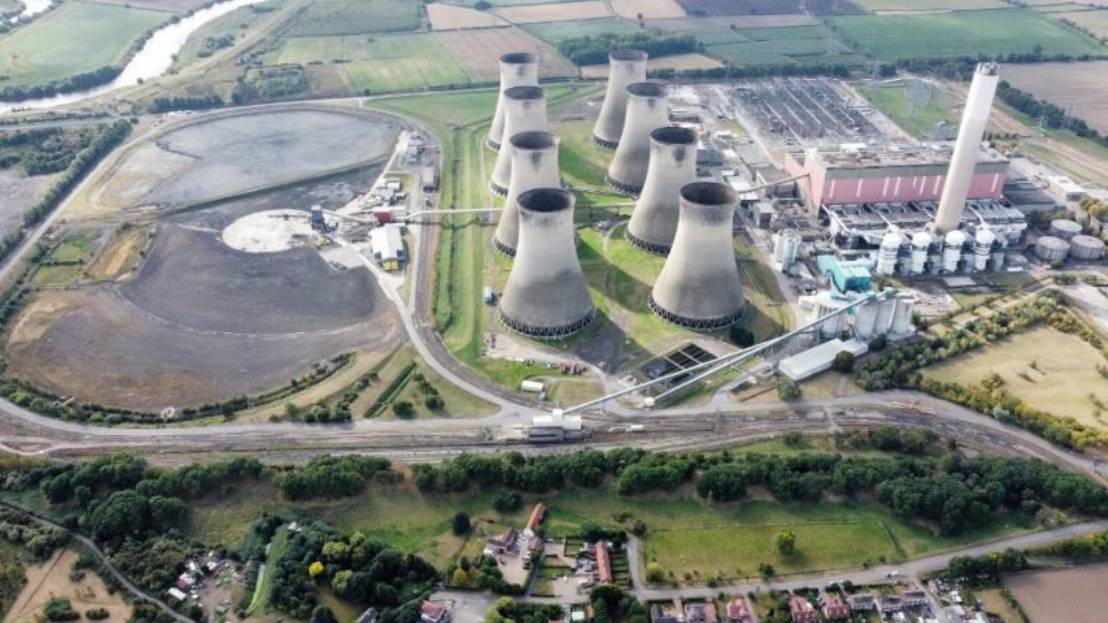
The derelict site of the former Cottam power station is set for a dramatic transformation into the UK’s first nuclear-powered data centre campus.
The £11 billion redevelopment is expected to create thousands of construction jobs and long-term skilled roles in the East Midlands and provide a major boost to the local economy.
The Cottam project will be led by Holtec International, EDF, and Tritax, combining nuclear innovation with the growing demand for secure, sustainable data infrastructure. The project will use Small Modular Reactors (SMRs) to provide 24/7 clean power for data centres at the site.
The announcement comes as part of the wider UK-US “Golden Age of Nuclear” partnership, signed this week to accelerate nuclear deployment, boost energy security, and deliver the infrastructure needed for the digital economy, which Prime Minister Keir Starmer hailed the agreement as a “landmark UK-US nuclear partnership is not just about powering our homes; it’s about powering our economy, our communities, and our ambition.”
For Nottinghamshire and the wider East Midlands, the Cottam project represents a huge opportunity. Once a major employer as a coal power station, the site will once again become an economic hub — this time for clean energy and the digital future.
Mayor of the East Midlands, Claire Ward said: “This project will be transformational for Nottinghamshire and the wider East Midlands. By bringing together advanced nuclear technology with the fast-growing digital economy, it will create thousands of high-quality jobs in construction, manufacturing and operations. It builds on our region’s proud energy heritage and, as part of the Trent Valley Supercluster, ensures sites like Cottam remain at the forefront of clean energy and innovation for decades to come.”
“The East Midlands is already home to world-class engineering, manufacturing and energy expertise. This investment will not only deliver long-term skilled employment and attract new supply chains, but it also underlines our wider ambition for the Supercluster to be a magnet for research, inward investment and technological leadership. It is a powerful demonstration of how the East Midlands can lead the UK in clean energy, advanced technology and economic growth.”
This is all part of the East Midlands Combined County Authority ambition for the Supercluster, which is focused on the three former coal-fired power stations located in West Burton, Cottam, and High Marnham. Already home to the UK Government’s world-leading Spherical Tokamak for Energy Production (STEP) fusion project, the Supercluster will attract clean energy, artificial intelligence, and technology companies to the region. A new discovery centre for investors, schools, and members of the public to learn about the innovative work at the Supercluster will be built, alongside eco-friendly homes, improved public transport, and exciting leisure opportunities.
With demand for AI, cloud services, and high-performance computing soaring, data centres are under pressure to expand — but they also need huge amounts of electricity. By pairing SMRs with data hubs, Cottam will serve as a model for sustainable, energy-secure growth.
Environmental benefits are also central to the plan, with nuclear power offering reliable baseload electricity without the carbon emissions of fossil fuels.
Simone Rossi, chief executive of EDF in the UK, said: “EDF is excited to be exploring this major infrastructure project that could transform both the Cottam site, and the wider region.
“This opens the potential for the area to continue to play a key role in the UK’s energy system for decades to come.”
Dr Rick Springman, president of Global Clean Energy Opportunities, Holtec, said: “Together with EDF and Tritax, we will help the UK seize a leadership position in both advanced nuclear deployment and the global AI race.
“The SMR-300s at Cottam represent a potential $15bn project, creating thousands of local jobs while drawing on the lessons from our Palisades project in Michigan. With this second-of-a-kind deployment, the UK is well positioned to join a global coalition of countries adopting the SMR-300 to drive long-term economic growth.”
James Dunlop, chief executive of Tritax Management, added: “The Cottam project is another example of the collaboration between EDF and Tritax to deliver projects of scale to accelerate the development of a substantial cluster of data centres.
“This development showcases how government and the private sector can work together to deliver best in class low carbon energy generation to enhance the UK’s critical national infrastructure.”